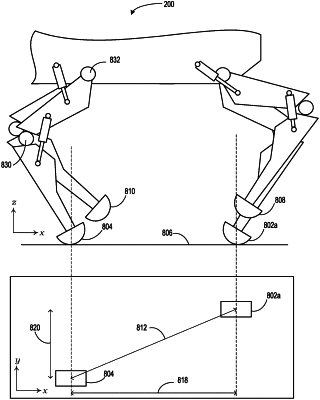| CPC B25J 9/1692 (2013.01) [B25J 9/1628 (2013.01); B62D 57/032 (2013.01); B25J 9/16 (2013.01); B25J 9/1679 (2013.01); Y10S 901/01 (2013.01); Y10S 901/46 (2013.01); Y10S 901/49 (2013.01)] | 18 Claims |

|
1. A computer-implemented method comprising:
determining, by data processing hardware of a quadruped robot, that a first foot of a first leg of the quadruped robot contacts a ground surface at a first time that is different as compared to a second time that is based on an estimated swing time for the first leg;
determining, by the data processing hardware, that a second foot of a second leg of the quadruped robot contacts the ground surface; and
based on determining that the first foot contacts the ground surface at the first time that is different as compared to the second time and determining that the second foot contacts the ground surface, transitioning, by the data processing hardware, control of a third leg and a fourth leg of the quadruped robot from a stance phase to a swing phase.
|